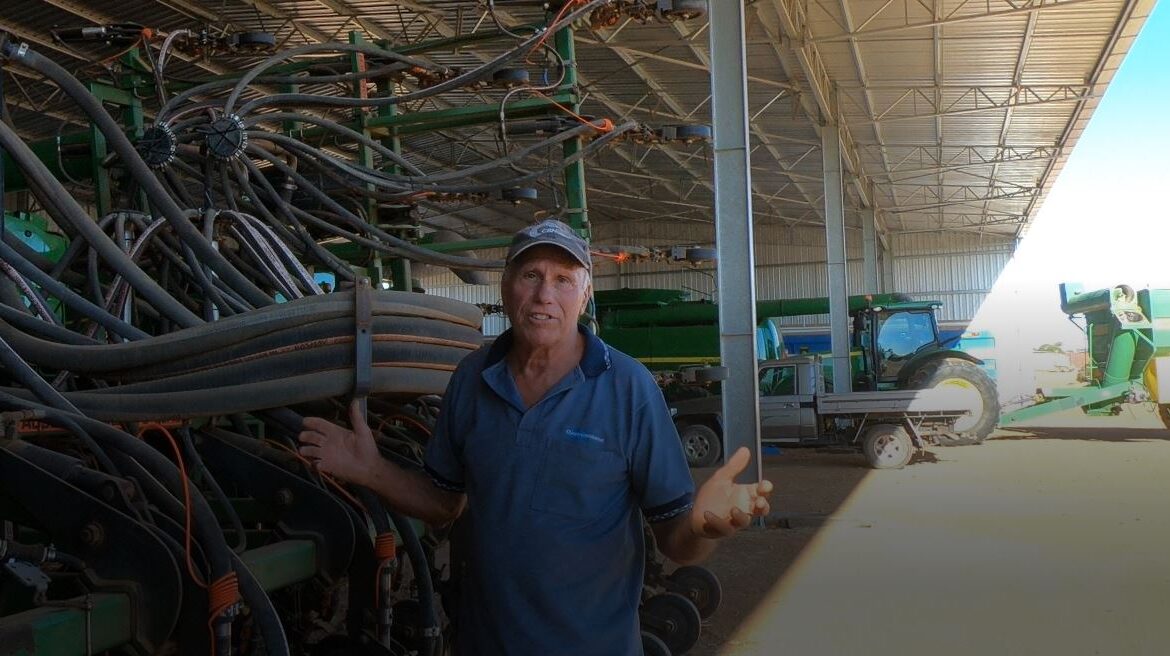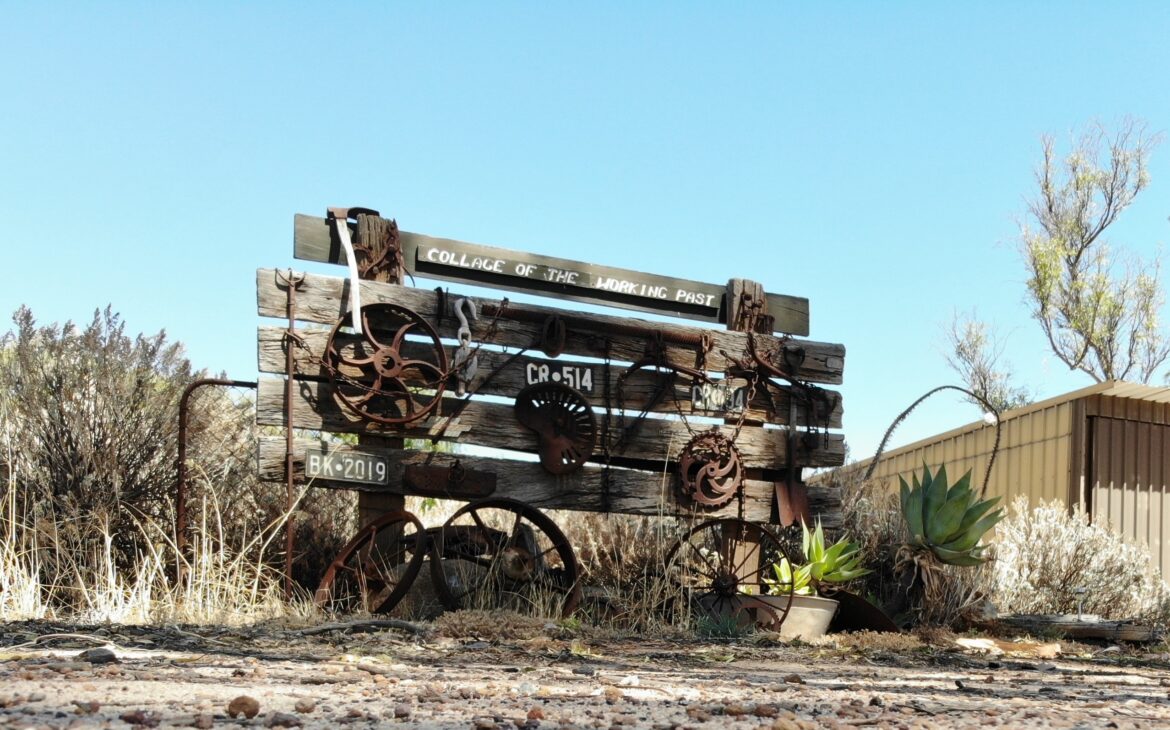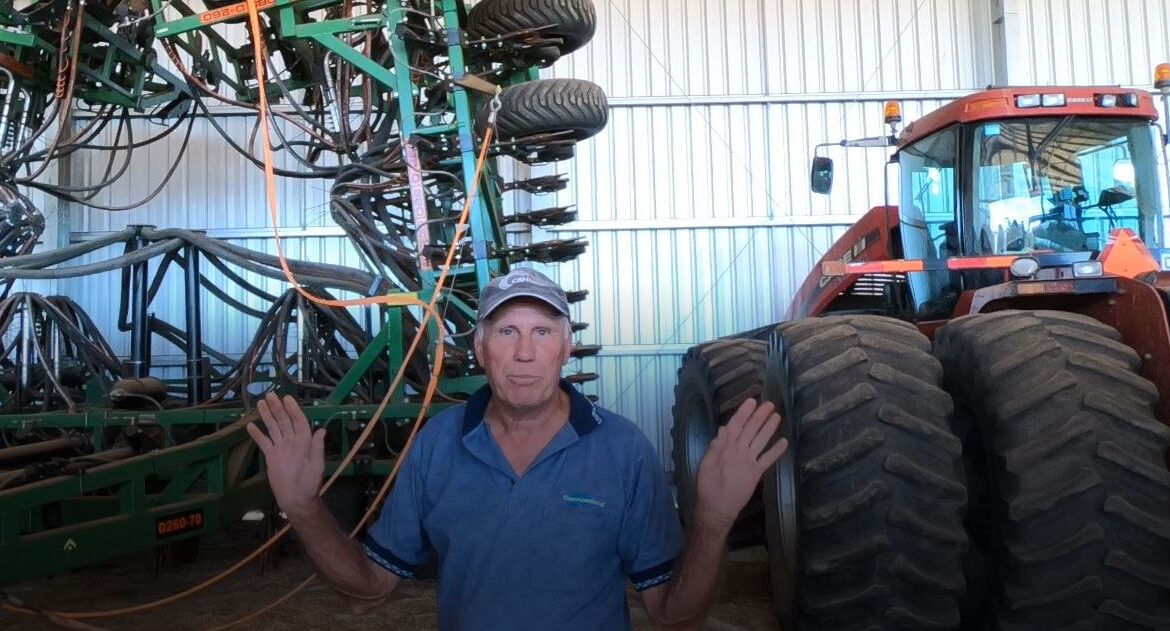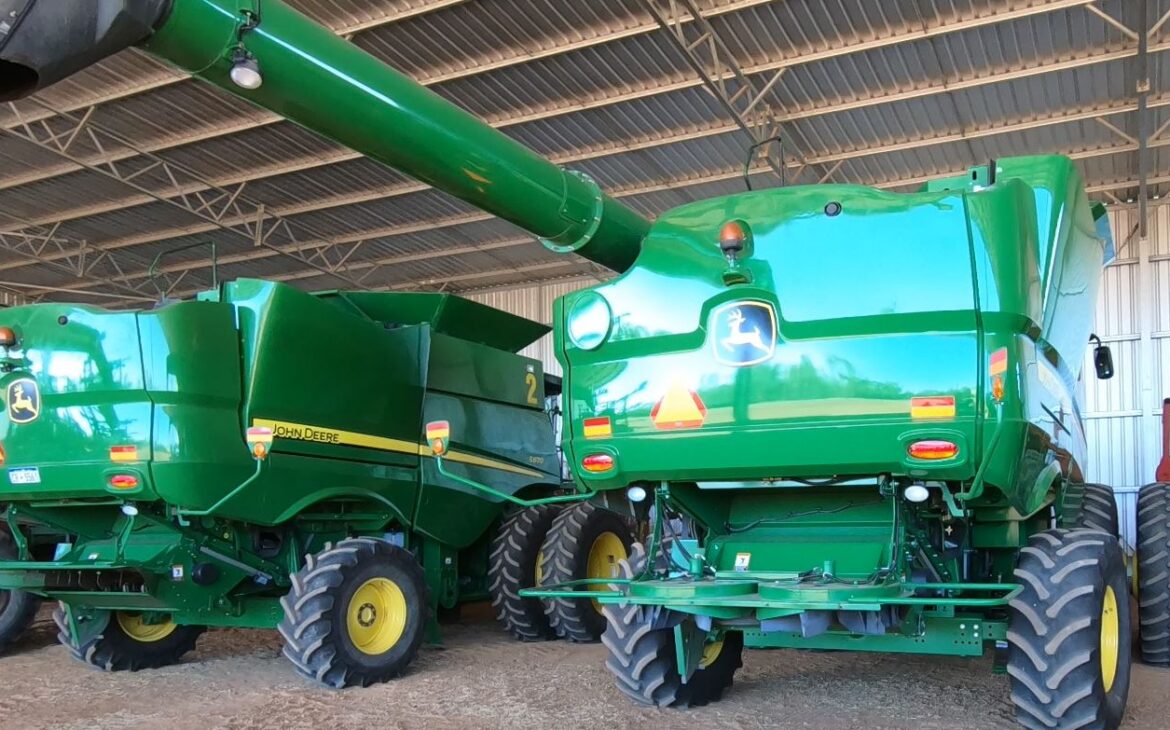We are the world’s best farmers
“ I will like to farm”
“There’s no problem with that mate, plenty of land to choose from. I mean acres and acres of it”
“But, what about water?”
“Oh, I didn’t tell you? There’s water underground but you probably shouldn’t bet on it. Too salty and barely good for anything”
“Any help from government, subsidies may be?”
“Quit whining and get on with the work mate. At best the government will give you a discount off your diesel cost. That’s it, don’t expect more”
“But, how do I produce anything this way?”

We are in Bilbarin, a small Western Australian rural location within the shire of Corrigin. Roughly two and a half hours and 230kms away is the major city – Perth. We had arrived the previous day and Colin is our host. Our purpose is to experience what it takes to feed Australia by understanding how the food that we eat on our dinner tables are grown. Having been a farmer for most of his life, Colin is well positioned to give us the exact experience that we are after.
Sitting relaxed with his back to a post displaying historical artefacts of the farm is Colin. At this spot, we are shaded from the heat of the rising morning sun by the Eucalyptus trees, the birds constantly perching on the tree and then flying away only to return barely a minute later. To our left is the farm house, the only visible residence anywhere the eyes can see. Calling it a farm house does not really do justice to the opulence and comfort this large house provides its occupants. In front of us is a thick dark patch which years of rainfall and the attendant stormwater had tried to wash away but it remains unmoved. This spot marks where the blacksmith work stood at the turn of the century, the blackness being the residue left by years of smelting iron with the bellow. Blacksmithing was an important part of the farming business as many of the implements used were either fabricated or repaired here. But, that was many years ago, a lot has changed since then . On our right is a big structural steel shed. It is here the agricultural machineries are kept.

Just a bit away from us were Saf and Brenda, our spouses, watching as I tap into the wealth of knowledge that this unassuming, quiet and humble man in front of me possesses. Luckily, as we were about to start what I termed “The farmer in a day course” comes Howard. Colin, already in his mid-seventies, is not growing younger. The years of hard work in building up the farm is gradually telling on him. He has looked at the future and decided to exit the farm business. He has exited the Sheep farming, sold off some of his machinery and leased others to Howard. When asked why, he answered that he wants to leave them as an inheritance for his grandchildren. Howard is basically occupying the areas that have been leased to him along with the equipment till that time. That is wisdom, right?

Colin, looking back at his life journey so far, is a satisfied man. Satisfied that he had taken the Bull by the horns and did not allow the daunting task of making a living off the lands here at Bilbarin detract him from his life ambition. In his words, he pursued what he was passionate about and had never had to work a single day in his life. He is fulfilled, has achieved his life ambitions and feels accomplished. If he were a religious man, he would be in a Church for thanksgiving, but he is not. Yet, his unbelieve has not been an issue for his marriage to Brenda, his devout Catholic wife of more than four decades. Hearing this makes me to do an introspection of my views about people of other faith. Check, I passed.

Life has not always been that rosy for Colin. Just two decades ago he was suddenly at a crossroad. His employers, at the job he had grown to like, have suddenly declared him redundant. What will the future be? Should he sulk and allow the future to slip bye? No, not Colin, he is made of tougher, sterner stuffs. He saw his redundancy as an opportunity, one for him to finally pursue what he had always wanted to be.
Having grown up not far from here and worked on his grandmother’s farm as a young lad, it came naturally that he should look for a farm in this area. He finally got 3,000 acres of land suitable for growing Wheat, Barley, Oats and Canola. He named it Stronsay.

Earlier, as part of the “Farmer in a Day” course that he is my Professor, Colin had showing me the gigantic pieces of Agricultural machineries such as the Harvester, the Planter, the Comb, etc. All lovely pieces of intimidating equipment that replace manual labour a million-fold. At just a little below 2m tall, I can’t be considered a short man by any standard. But, standing next to the Planter, I was like one of the Lilliputians that Gulliver met in his travels. I climbed up the rails, looking into the Driver’s cage and was awed. Awed not only by the massive piece of iron on which I stood but more about what Colin was explaining to me.
It will take just about an hour to train a backpacker to operate it, he had said. Not only will the planter dig precisely into the soil at an exact depth it’s been programmed, it will also align all the rows, spacing them neatly equally. It does more. As it drops the seed into the ground, it adds the exact amount of fertilizer and pesticides that are needed. Three operations at a single time over scores of acres, all operated by a single individual. It was at this point that it dawned on me that despite the thousands of acres in the vicinity of where we are, I have not seen many individuals. In fact, the only other person we had seen so far is Colin’s brother. I then asked Colin, probably what he might have considered a dumb question, how do you get the workers you need in getting your farming business done? Again, I was caught off-guard with his answer – he works his 3,000 acre farm with only three people – himself, his brother and one other person. Amazing!

The farming season that just ended has been one of the best years. The Pilbara News, a popular online news source in this area had splashed it all over its pages that Corrigin has had the wettest May and June in a decade, providing the perfect amount of moisture for crops. The farmers had smiled to the bank. However, it has not always been like this. The previous year had been a bad one. As Colin narrated, the farmers easily lost from two hundred to three hundred thousand Australian Dollars to drought. It easily was more for others as each farmer’s loss was dependent on the size of the acreage under cultivation. This is the rough estimate of the cost of seedling and labour. Well, fertilizer is a different narrative, depending on the way one looks at it. Expenditure on fertilizers is not really lost as it is retained in the ground, still available to support the following season’s planting. Colin calls this ‘Fertilizer Banking’.
The business of farming in this area is largely dependent on the vagaries of nature. The underground water is highly salty and not of good use for Agriculture so everyone depends on rainfall. Around the house, the workshops and sheds, are huge sealed cylindrical water storage tanks. The smallest holding 30,000 litres of rainwater. Some are made of steel and others from plastics but what is common is that all of them are connected to the different roofs to receive rainwater as it flows down the corrugated lines.

Sheep farming also requires water, lots of it. The farm has about six artificial ponds. Selected areas have been dug out and the sand collected used as an embarkment round the huge pits. These are also made to collect and store rainwater for the sheep to drink. While standing next to one, I saw an abandoned wind pump next to which there is a solar pump. I asked about these and Colin knowledge of his farm was immediately put at my use. The wind pump contains a lot of moving parts that get worn over the years. New safety standards require the erection of tall scaffolds for repairs and this has become a costly venture. The solar pump, on the other hand is a new technology, cheaper and easier to maintain. The sheep don’t care about solar or wind, what they care about is their pellets and water. If the pond water runs out, the farmer is in trouble as he has to truck in water to keep his sheep alive or lose the lot.
My farm training is not complete without talking about seeds. I asked Colin how the seeds are sourced. In his polished Australian accent, he responded “You keep the best seed of last year, mate.” He further explained this. During harvest, the farmer takes a selected portion of the produce to seed cleaners who remove impurities, select the healthy seeds and pre-treat the lot to protect them for their oncoming period in Silo storage. I could see a few of those Silos on the farm. I had looked through the side glass panel with a diameter of about 5 inches and seen the wheat stored for this year’s farming.
Keeping last year’s seed is not the practise for everyone and surely not true for every season. The farmer needs to keep abreast of current developments. Seed Technology is constantly improving and evolving. You need high yield, disease, pest and drought resistant seeds. Such knowledge is acquired by talking to other farmers, attending farming events and workshops organised by purveyors of knowledge in this area. It is for this reason that the farmer will, sometimes, have to do away with last year’s seeds and buy fresh ones.
I had told Colin that I come from the project world and he had in turn explained to me that the farmer must also be good in project management. The inputs for next year’s planting season have to be secured now, months well in advance. The fertilizers, the pesticides, services of consultants and machinery, if needed, all must be contracted and booked. This is made more tedious as every farmer is in need of the same resource at the same time.
As I look into the horizon, all I could see is endless fields of gold glittering in the early morning sun. These are the 3 to 4 inch stalks left behind following the harvest of Wheat. So, I had to ask, why were these stalks not removed fully to leave the ground fallow. Colin explained that was the practise a few decades back. However, evidence based Agricultural thinking is to leave the stalks behind as they become bio-organic materials that will decompose and add nutrients to the soil. The planter will effortlessly go through and still plant the new seeds anyway.

Howard was on his way to feed the sheep so we tagged along. In this operation, he is raising 2,500 sheep. We had missed the sheep shearing by a week. The previous week, the thick wools had been shaven off the sheep and taken off to the market. Not far from where we stood was the aluminium barn in which the sheep had been led and shorn of their covering. At our approach, the sheep had gone into a frenzy. Over months, they have come to associate the sound of an approaching vehicle to feeding time. They are not wrong. As they flocked around the vehicles we barely had space to get out of the two dusty farm trucks we had brought. The baa of sheep was deafening. While we saw dirt and noise, all Howard saw was money. At around $350 a head, it is not difficult to understand why. The sheep aspect of the business is easily above $5m yet it is a one-man operation.
While I marvelled at all this, back at the interview, Colin sounded a word of caution. “You need to beware of the snubs! Snubs”. Snubs, how come? Colin is not an indigenous Australian, he is of European stock. So what could he mean? Well, he explained himself. Acceptance within the community can open or close doors for a farmer. In his words, it took him the better part of a decade to become trusted by other farmers within the community and, even still, more than two decades on, there are those farmers that won’t talk to him. His 3,000-acre farm, which looked gargantuan to me, is nothing but child’s play in the sight of the big time farmers. In fact they call his a “hobby farm”, something you do as a hobby and not as a real farmer. These are farmers who own acreages from 10,000 and above. That is more than 40 square kilometers of land. These acreages are bigger than the size of Nauru or Tuvalu which are countries and members of the United Nation. They own countries and are the de facto Presidents, I mused. Yet, this is no ground for anyone to be less human or simply be narcissistic. In our discussion, Colin had referred to his 3,000 acres as his country, I can’t agree less.
As we round up our trip to this lovely part of Australia, I can’t leave without clarifying an earlier statement that Colin had made. I had to get back to where we started and asked Colin to explain why he had said that he and farmers like him, in the wheatbelt region of Western Australia are the world’s best farmers. Look at the land, he said. What do you see? Sandy, hard soil. Nothing grows here of its own. You need to provide the nutrients. Then with no rivers and natural waters, irrigation is impossible, and one has to rely on nature. Oh, have you heard of the rabbits as well? The invading weeds? Everything here conspires to get you out of farming and yet, we are one of the world’s largest producers of wheat.
Do you need any more reason to agree that we are the world’s best farmers?
‘Bimbo BAKARE
…look forward to the video content on YouTube on K2TV











